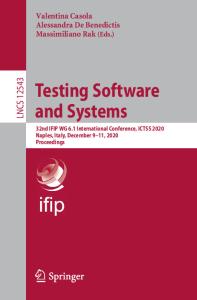A method to rapidly and accurately evaluate the maximum inclusion size in medium strength steel
- PDF / 475,844 Bytes
- 8 Pages / 584.957 x 782.986 pts Page_size
- 12 Downloads / 898 Views
The object of this paper is to propose a novel method to evaluate the maximum inclusion size in medium strength steel by ultrasonic fatigue testing. The inclusion sizes in the medium strength steel were evaluated by ultrasonic fatigue testing using the fatigue specimen with a large risk volume under water-cooling condition. To ensure fatigue specimens of medium strength steel fracture from the internal inclusion, heat treatment and oxynitrocarburization were conducted to increase the strength of the specimen and to protect the specimen from surface corrosion induced by cooling water. The results show that evaluation of the inclusion size by the proposed method is more accurate than traditional approaches, which are based on inclusion size characterization from arbitrary two dimensional cross sections. Additionally, as the method is based on fatigue testing in the ultrasonic frequency regime, it can be conducted in a reasonable amount of time.
I. INTRODUCTION
The non-metallic inclusion is not only the origin of fatigue failure for high strength steel, but also causes fatigue failure of medium strength steel in certain conditions.1–3 For example, it is common for a railway wheel which is made from medium strength steel to fracture from the internal inclusion under rolling contact loading.4–7 When the steel fractures from the internal inclusion, the fatigue strength is determined by the largest inclusion in the material.8,9 Therefore, it is important to evaluate the inclusion size in the medium strength steel. The conventional method for evaluating the inclusion size is based on surface analysis by optical microscopy.10 Inclusion sizes on the polished surface of a sample are measured by optical microscopy. Then, the maximum inclusion size in a given material volume can be estimated based on the measured inclusion sizes by statistics of extreme values (SEV) method.9,11 However, the inclusion size measured by surface analysis is smaller than the actual size because the probability of observing the largest inclusion in an arbitrary section is quite small.12 Furuya conducted ultrasonic fatigue testing for high strength steel and then evaluated the inclusion size on the fracture surface of fatigue specimens; this evaluation method was proved to possess the advantage of detecting larger inclusions compared with the conventional surface analysis.13 However, it still has some deficiencies. This method cannot be used to evaluate the inclusion size in medium strength steel, because fatigue failure of medium Contributing Editor: Jürgen Eckert a) Address all correspondence to this author. e-mail: [email protected] DOI: 10.1557/jmr.2016.287
strength steel initiates from the surface of specimen, rather than the internal inclusion.1–3 Besides, the inclusion size increases in proportion to the increased risk volume of fatigue specimen that is estimated as the region subjected to over 90% of maximal stress.14,15 However, the risk volume of the hourglass-shaped specimen that was used by Furuya tends to be small.13 The accuracy of th
Data Loading...











